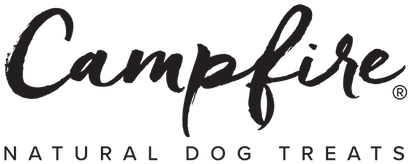OVER 1,500 ⭐️⭐️⭐️⭐️⭐️ 5-STAR REVIEWS
OVER 1,500 ⭐️⭐️⭐️⭐️⭐️ 5-STAR REVIEWS
Can Dogs Eat Anchovies? Benefits and how much to feed
by Marko H. Wittich March 08, 2019 6 min read 0 Comments

[updated 07/03/2019]
Anchovies are one of the healthiest fishes you can add to the diet of your dog. Anchovies are naturally rich in omega-3 fatty acids, minerals and vitamins. In particular, their omega-3 fatty acids offer powerful and wide-ranging health benefits. Omega-3 can contribute to the brain development of puppies, reduce inflammation, help dogs with arthritis, improve heart health and much more.
What are Anchovies?
Anchovies are small, silvery fish with green and blue reflections. They swim in large, dense schools. Most of the more than 100 anchovy species live in shallow tropical or warm temperate seas, where they often enter brackish water around river mouths. A few tropical anchovies inhabit freshwater.Anchovies are rapidly growing fish. Their primary food source is plankton. The average size of an adult anchovy is about 5 to 6 inches.
 Illustration of an European Anchovy
Illustration of an European Anchovy
Anchovies are also classified as “oily fish”. Oily fish have oil in their tissues and in the belly cavity around the gut. Fillets of oily fish can contain up to 30% oil, although this figure varies both within and between species. Other oily fish are sardines and herring, but also larger pelagic fish, such as salmon, trout, mackerel, tuna and swordfish.
Benefits of Anchovies for Dogs
Anchovies offer many nutritional benefits for dogs. They are an extremely rich source of the highly beneficial omega-3 fatty acids eicosapentaenoic acid (EPA), and docosahexaenoic acid (DHA). In addition, they are protein-rich and high in calcium, iron and other minerals. Anchovies are also a healthy source of the vitamins A, E, K, B-6 and B-12.
Health Benefits of the Omega-3 Fatty Acids EPA and DHA for Dogs
- Supporting the brain development of puppies
- Helping dogs with arthritis by reducing inflammation
- Improving your canine companion’s ability to fight cancer
- Benefiting the immune system of dogs
- Boosting the heart and kidney health of canines
- Improving the skin and coat health of dogs
- Helping dogs by reducing anxiety, depression and hyperactivity¹
Recommended reading: Omega-3 for Dogs: What is it? Benefits, Sources and Dosage
Why are Anchovies one of the Best Fishes for Dogs?
In a perfect world, many different types of fish could provide your dog with the omega-3 fatty acids they need. Unfortunately, a large part of our fish supply is nowadays tainted with industrial toxins and pollutants. Especially larger carnivorous fish up in the food chain like salmon, mackerel and tuna are known to accumulate toxins, including heavy metals like arsenic, cadmium, lead and mercury, over their life span. This is why feeding these types of fish to our pets is no longer recommended.
Anchovies are at the bottom of the aquatic food chain, and are also relatively short lived. Because of this, anchovies do not harbor pollutants and toxins as larger and longer-lived fish do.
This makes anchovies an ideal feeding source because:
- Anchovies are one of the densest sources of the healthy omega-3 fatty acids EPA and DHA.
- In comparison to large fish like salmon, mackerel or tuna, anchovies are known to be least tainted by environmental pollutants.
- Anchovies are perfectly sized. You can give them to your dog in whole without worrying about bones getting stuck in their mouth or throat.
- Most dogs love the taste of anchovies.
How to Feed Anchovies to Your Dog
There are several healthy options to enrich the diet of your dog with anchovies, but be aware, not all anchovies sold for human consumption are good for canines too.
Healthy Anchovies to Give to Your Dog
- Raw, fresh anchovies directly from a fishery or the fish department of a well assorted super market.
- Raw, frozen or thawed anchovies, also available in well assorted super markets.
- Dried anchovies, if not salted or otherwise spiced. Depending on the drying process, dried anchovies are also referred to as dehydrated or freeze-dried anchovies.
- Canned anchovies without salt or spices packed in water.
Not Recommended for Your Dog are the Following Types of Anchovies
- Anchovies packed in salt are not safe for your dog to eat. The high sodium content makes them toxic for your canine.
- Anchovies packed in oil are also not recommended. Many plant oils like sunflower oil, corn oil or soy bean oil, are extremely high in omega-6 fatty acids. As most dogs already get too much omega-6 with their regular diet, it is not advisable to further supplement their food with these fatty acids.² Even anchovies packed in olive oil (which is low in omega-6) are not ideal for dogs. The oil would just add extra calories to your canine’s diet, without providing further benefits.
- It is also recommended to avoid giving your dog anchovies which are marinated or spiced in any other way.
You can give your dog anchovies whole: the head, tail and everything included. You don’t have to worry about the bones because they are tiny and fully digestible. For small dogs, you can break or cut a whole fish in half. Depending on your preference, you can feed anchovies as a treat, or make them part of a regular meal.
Keep in mind that the main health benefit for your dog comes from the omega-3 fatty acids EPA and DHA within the anchovies. These fatty acids are sensitive to temperature and oxygen.
In case you decide to give your dog dried anchovies, it is recommended that you buy them in resealable, airtight bags. Reseal the bag after you have taken out fish. Store the bag in a cool, dry place and use it within 30 days. In case you opt for canned anchovies, make sure to store opened cans in a fridge and use them within two to three days. Fresh fish should also be stored in a fridge, and given to your dog within two to three days.

All-Natural Dehydrated Anchovies
- High in omega-3 with wide-ranging health benefits for heart, skin and coat health
- Suitable for dogs and cats suffering from poultry or meat related allergies
- Free of any additives, colors, fillers or preservatives
- Sourced and made in the USA
How Many Anchovies can you Give to Your Dog?
The table below is meant to provide you with an orientation of how many anchovies you can give to an adult dog.The recommendation in the table is based on 25% of the safe maximum daily dosage of combined EPA and DHA fatty acids stated by the National Research Council.³ The anchovies considered to calculate this recommendation are Campfire Treats' Dehydrated Anchovies for Dogs & Cats.⁴
| DOG'S WEIGHT | NUMBER OF DEHYDRATED ANCHOVIES PER WEEK |
| 5 lbs | 2 |
| 10 lbs | 3 to 4 |
| 15 lbs | 4 to 5 |
| 20 lbs | 5 to 6 |
| 25 lbs | 6 to 8 |
| 30 lbs | 7 to 9 |
| 35 lbs | 7 to 10 |
| 40 lbs | 8 to 11 |
| 45 lbs | 9 to 12 |
| 50 lbs | 10 to 13 |
| 55 lbs | 10 to 14 |
| 60 lbs | 11 to 15 |
| 65 lbs | 12 to 15 |
| 70 lbs | 12 to 16 |
| 75 lbs | 13 to 17 |
| 80 lbs | 14 to 18 |
| 85 lbs | 14 to 19 |
| 90 lbs | 15 to 20 |
| 95 lbs | 15 to 21 |
| 100 lbs | 16 to 21 |
| 105 lbs | 17 to 22 |
| 110 lbs | 17 to 23 |
| 115 lbs | 18 to 24 |
| 120 lbs | 18 to 25 |
| 125 lbs | 19 to 25 |
| 130 lbs | 20 to 26 |
| 135 lbs | 20 to 27 |
| 140 lbs | 21 to 27 |
| 145 lbs | 21 to 28 |
| 150 lbs | 22 to 29 |
Recommended Number of Dehydrated Anchovies per Week
You can get a good idea of the right amount of fish by looking at your dog’s stools. If you notice the feces becomes very soft, you want to reduce the amount of fish you feed. If you don’t notice much of a benefit in terms of coat improvements or joint stiffness within eight weeks, then you can increase the number of anchovies slightly.
Be aware that anchovies contain a lot of calories. A 4.5 oz bag of dehydrated anchovies, containing 15 to 20 fish, has about 644 calories.⁵ A single fish therefore has around 30 to 45 calories. You may want to consider these extra calories by reducing the rest of your dog’s diet accordingly. This is especially recommended for overweight pets.
In Short
Anchovies are small silvery fish, which are high in the omega-3 fatty acids EPS and DHA. These fatty acids offer powerful and wide-ranging health benefits for dogs. Most beneficial for dogs are fresh, frozen, dried/dehydrated or canned anchovies packed in water. Anchovies packed in salt and/or oil should not be given to dogs.
Have you ever given anchovies to your dog? What are your experiences? We’d love to hear from you!
-
¹ Wittich MH: Omega-3 for Dogs: What is it? Benefits, Sources and Dosage. Campfire Treats; 2019.
⁴ The recommended amount of fish will vary, depending on the manufacturer of the anchovies you choose.
Recent Articles
-
Can Dogs Eat Carrots? Health benefits, helpful tips, and more
December 17, 2025
-
Can Dogs Eat Cranberries? Health benefits and potential pitfalls
December 03, 2025
-
Can Dogs Eat Turkey Necks? Benefits, safe feeding, and more
November 19, 2025
-
Xylitol Poisoning in Dogs — and how to prevent it
October 30, 2025
-
Can Dogs Eat Blueberries? Health benefits, risks, and feeding tips
October 23, 2025
Join the Campfire Treats Family
and get access to news and special promotions.

